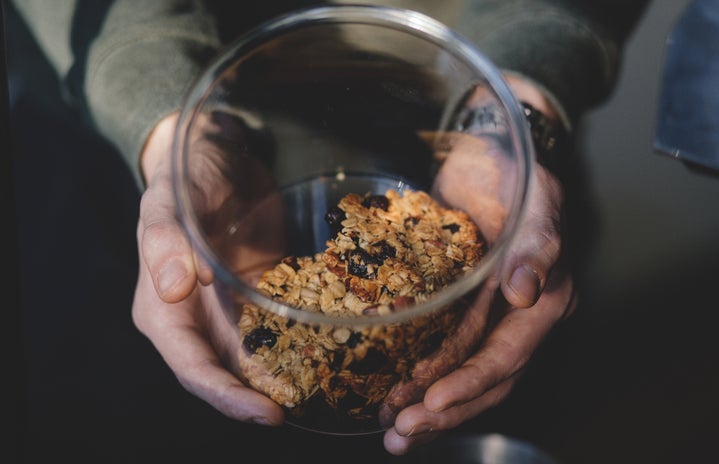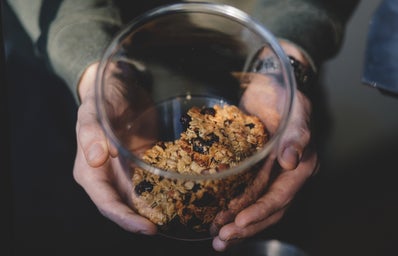The world as we know it today is not the same world that our grandparents, parents or even older siblings might have lived in. We’ve gone from telephones that looked like bricks to in-the-pocket smartphones, from waiting for days to get a letter to instant messages and phone calls. However, the revolution is not just limited to technology. Even the food we eat today has changed — here;ss how.
- 1910s: Cracker Jack
-
According to food historian and author of Food in America, Andrew F. Smith, Cracker Jacks were the first commercial snack food. The caramel-coated popcorn and peanut mix launched in 1896, and by 1916, it was the best-selling snack food in the world.
- 1920s: Candy Bars
-
With the 1920s came Prohibition, but also the advent of the Mars Company. Founded in 1922, the company created the Milky Way bar in 1923. It went on to create Snickers — which has since remained the most popular candy bar in the US — and Three Musketeers in the early 1930s.
- 1930s: Congealed salads and casseroles
-
The Great Depression changed the way that women cooked. Because many women had jobs during this time period, efficiency became a main priority in the kitchen. Casseroles — like green bean and tuna noodle — were easy to prepare and served as a creative way to repurpose all kinds of leftovers into a new meal.
- 1940s: Frozen orange juice
-
Andrew Smith says that frozen food took off after World War II ended. Before this time period, refrigerators didn’t have freezers that were large enough to store much of anything.
In 1946, a man named Jack Fox created the Minute Maid company. Minute Maid manufactured the first-ever frozen orange juice concentrate. This canned alternative was cheap, lasted a long time and with the addition of water, consumers could have orange juice in minutes.
- 1950s: TV dinners
-
C.A. Swanson Co starting making TV dinners in 1950. The frozen meals featured turkey, chicken and beef that only required a short amount of oven time before it was ready to eat. The dinners caught on quick. According to Andrew Smith, in 1956, Swanson sold a total of 13 million TV dinners.
- 1960s: Beef Wellington
-
This dish of beef covered in foie gras or mushrooms and baked in a puff pastry became popular party fare in the ’60s. It served as evidence that the hostess who was serving it was high class. Despite the fact that many people think the dish is named after an English Duke, the recipe was far more popular in America than in England.
- 1970s: Smoothies
-
Although smoothies were invented during the 1930s (when the blender first came out), Andrew Smith says that smoothies only really gained significant popularity in the 70s. Vegetarians had caught onto the trend earlier in the 60s, but the fruity, blended beverage didn’t gain mass appeal until it hit malls in the 70s. Smoothies then made a comeback in the early 2000s.
- 1980s: Jell-O Pudding Pops
-
Along with the popularization of the term “comfort food,” the ’80s saw a rise in sweet snacks like Jell-O Pudding Pops. The pops were advertised as “frozen pudding on a stick” that was made with 60% skim milk.
- 1990s: Lunchables
-
Every school kid’s dream lunch was a Lunchable. Lunchables were a DIY lunch kit that allowed you to build your own pizza or simply enjoy some crackers and cheese. The packages included ingredients from popular brands like shredded Kraft cheese (Lunchables were manufactured by Kraft Heinz) and Ritz crackers.
- 2000s: Cupcakes
-
Cupcakes have been around for a while, but it wasn’t until the first decade of the 2000s that the dessert experienced a true boom in popularity. Sprinkles, one of the first cupcake bakeries, opened in Beverly Hills in 2005. Four years later, Baked By Melissa started selling the tasty, bite-sized cupcakes they’re now known for. That same year the first episode of Cupcake Wars aired, a baking competition reality show, in which contestants competed to make the best cupcakes.
- 2010s: Kale
-
A certain shift towards salads and grain-based bowls around the 2010s created an increase in popularity in farmers’ markets and fresh produce. This has led to kale’s reign as the health food of the moment. Kale Caesar salads have become commonplace on many a restaurant menu and people have taken to wearing shirts emblazoned with “Kale” or “eat more kale” on them.
It is interesting to look at each decade and see what food grew to be the most popular in that decade. Even more interesting is seeing if we still have that common food nowadays. I know I still love getting a candy bar and smoothie occasionally.



